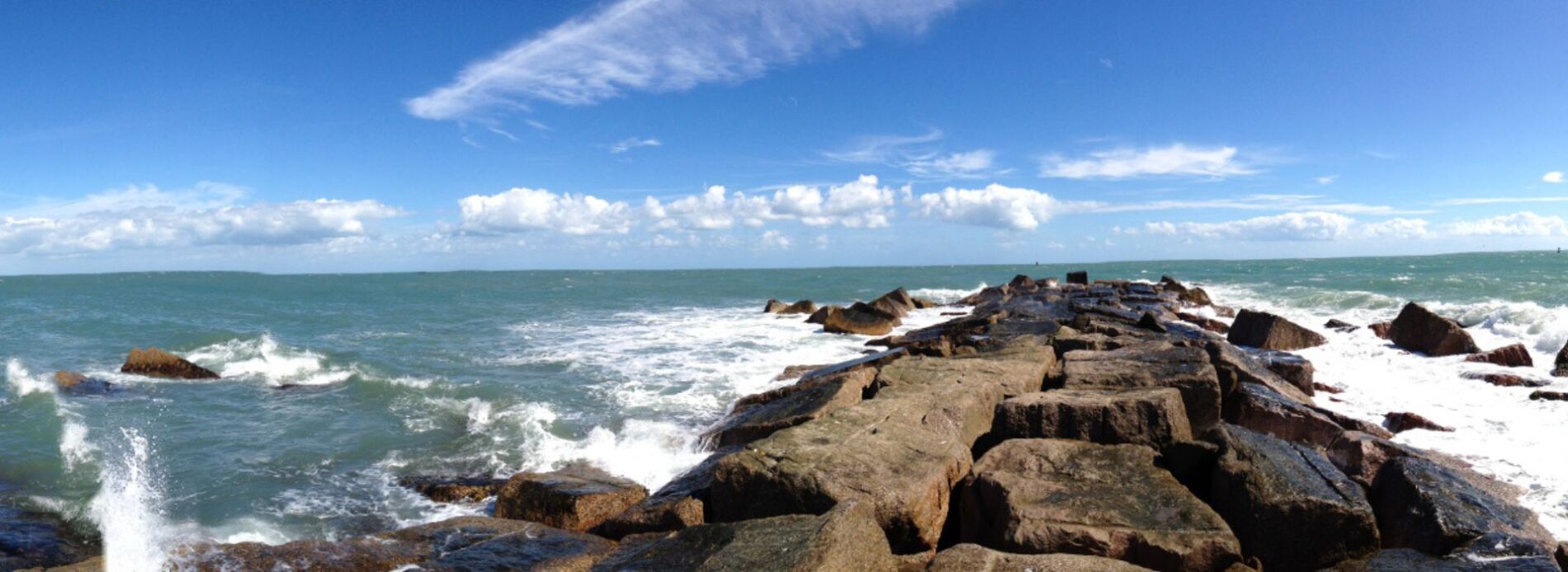Rip tides cause more deaths every year than hurricanes, tornadoes, and lightning strikes combined. A common myth is that rip tides pull swimmers underwater, but that isn’t accurate. The powerful part of rip tides is on the surface and close to it. The danger with getting caught in rip currents is being pulled out to sea. Many people who drown in a rip tide do so because they panic and don’t know how to free themselves from it.
We’re posting information from the NOAA site about rip tides and rip currents because Rip Tide Awareness Week is from June 4-10, 2018. It’s important to know what to do if you or a family member encounters a rip current.
Rip tides can occur in any body of water that has waves. That includes oceans, bays, gulfs, seas, and even large lakes. The stronger the waves, the stronger a rip current will be. Offshore storms can also have an effect on rip tides, making them more dangerous at low tide.
Rip currents are powerful currents of water moving away from shore and are the leading surf hazard for all beachgoers, especially for non-swimmers. According to the United States Lifesaving Association, 80 percent of surf beach rescues are a result of rip currents.
Rip currents form when waves break near the shoreline, piling up water between the breaking waves at the beach. One of the ways this water returns to sea is to form a narrow current of water that moves swiftly back out to sea, roughly perpendicular to the shoreline. Under most tide and sea conditions the speeds are relatively slow, however when wave, tide and beach conditions are just right, the speed of the current quickly increases and become dangerous to anyone unfortunate to be caught up in it.
Some things to watch for to identify rip tides and currents include:
~ a channel of churning or choppy water,
~ an area having a notable difference in water color,
~ a line of foam, seaweed or debris moving steadily out to sea,
~ an area of calm and/or muddy water,
~ or any break in the incoming wave pattern.
Rip currents are often not readily or easily identifiable to the average person so watch for these clues. If you are concerned about the possibility of rip currents, ask a nearby lifeguard. If there is no lifeguard present don’t swim at that location.
If you are ever caught in a rip current, remain calm. Never fight against the current. Swim out of the current in a direction parallel to the shore. Then swim at an angle away from the current and toward the shore. If you are unable to swim out of the rip current, float on your back or calmly tread water. When safely out of the current, return to shore. If you are unable to reach shore, wave your arms and call for help.
If you see someone in trouble, don’t become a victim yourself. Many people drown each summer while trying to save someone else from a rip current. Call to a lifeguard if one is available. If not, have someone call 9-1-1. Throw the rip current victim something that floats such as a life jacket or inflatable ball. Do not enter the water to assist them!
It’s a good idea to always swim where lifeguards are stationed and don’t swim alone. If you’re not a strong swimmer, wear a flotation device. Whether you’re a good swimmer or not, make sure you and your family understand the methods of escaping a rip tide.


